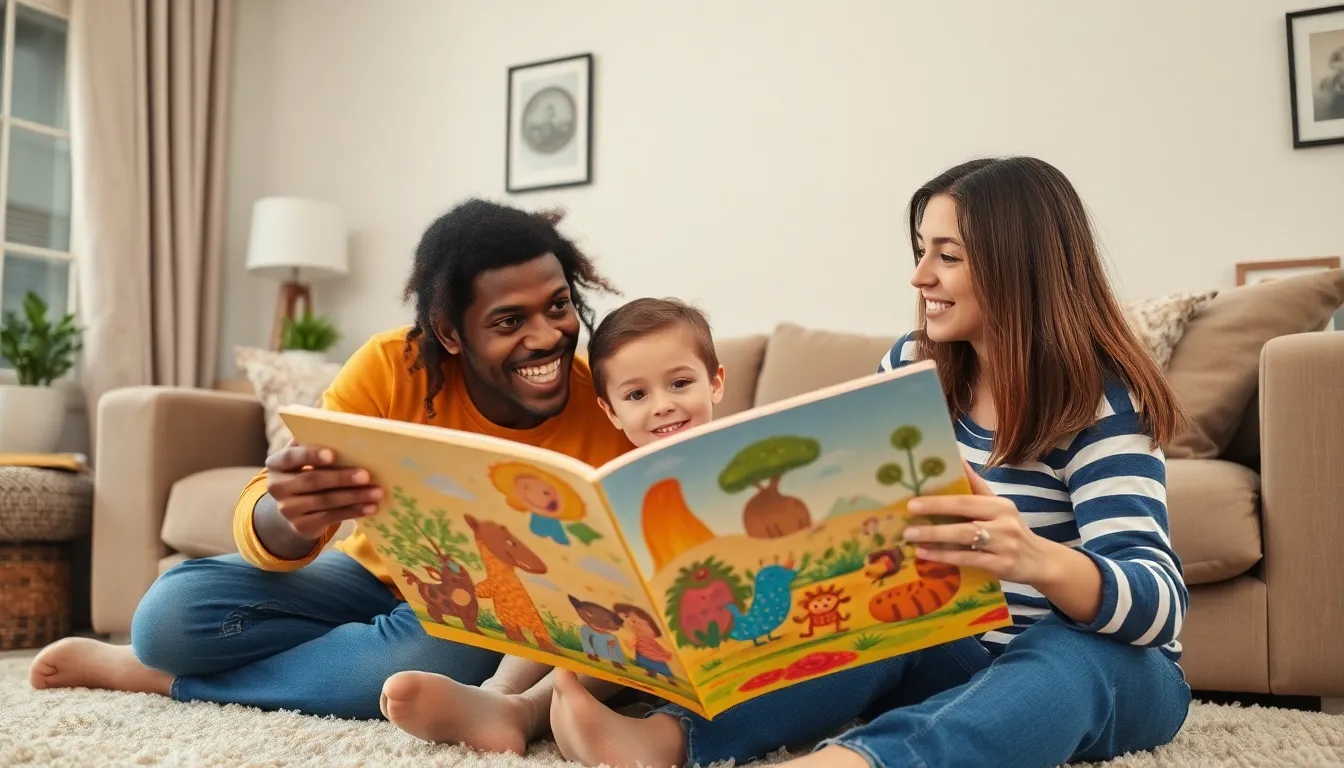Table of Contents
ToggleIn today’s diverse linguistic landscape, parental language practices play a crucial role in shaping children’s communication skills and cultural identity. As families navigate multiple languages and dialects, the way parents interact with their children can significantly influence language development and cognitive growth.
Understanding these practices not only highlights the importance of fostering a rich linguistic environment but also reveals how language choices can enhance emotional connections and social interactions. By exploring various parental approaches, families can discover effective strategies to support their children’s language acquisition and overall development.
Overview of Parental Language Practices
Parental language practices encompass verbal and non-verbal communication methods that parents use with their children. These practices directly influence children’s language acquisition and cognitive development. Parents who engage in rich dialogues contribute significantly to vocabulary growth and grammatical understanding.
Different approaches to language use can shape not only linguistic skills but also emotional and social capabilities. For instance, parents who ask open-ended questions encourage critical thinking and expressive language skills. In contrast, parents using more directive language may limit children’s opportunities for independent thought and expression.
Creating a supportive linguistic environment involves varied techniques, such as reading aloud, storytelling, and engaging in play. These activities foster both comprehension and production of language, enriching children’s experiences. Regular interaction in diverse contexts enhances communication skills and cultural identity, especially in multilingual households.
Parental scaffolding also plays a crucial role in language development. Scaffolding refers to the support that parents provide while children learn new language concepts. Effective scaffolding techniques can include modeling correct usage, providing prompts, and offering constructive feedback. Such practices promote confidence and competence in language use.
Ultimately, parental language practices form the foundation for children’s communication skills, impacting their academic success and social relationships. Adopting diverse strategies can lead to a more profound and lasting influence on language development and overall growth.
Importance of Parental Language Practices

Parental language practices significantly influence children’s development and learning. Engaging in rich linguistic interactions fosters essential skills necessary for effective communication and social integration.
Impact on Child Development
Parental language practices directly affect cognitive, emotional, and social development in children. Children exposed to varied language interactions demonstrate enhanced executive functioning skills, such as problem-solving and emotional regulation. For example, discussions around feelings during storytelling promote empathy and social awareness. Additionally, consistent verbal engagement strengthens neural connections, laying a robust foundation for lifelong learning. Practical experiences—such as family conversations over meals or reading sessions—encourage children to express themselves effectively and develop confidence in their communication abilities.
Role in Language Acquisition
Parental language practices are vital for language acquisition. Children acquire language through modeling from caregivers, who provide examples of vocabulary and syntax in natural contexts. Parents who emphasize storytelling and interactive reading create an immersive linguistic environment, enhancing children’s comprehension and expressive skills. Questioning techniques, such as open-ended inquiries, stimulate critical thinking and language use. Regular exposure to diverse vocabulary and grammatical structures accelerates children’s language development, particularly in multilingual households. By tailoring their language input to match children’s developmental stages, parents can foster an enriching environment that supports optimal language acquisition.
Types of Parental Language Practices
Parental language practices encompass various strategies that significantly influence children’s language development. Three key practices include direct language interaction, reading to children, and using expansive language techniques.
Direct Language Interaction
Direct language interaction involves meaningful conversations between parents and children. Engaging in discussions helps children practice language skills and fosters cognitive development. When parents use open-ended questions, they encourage critical thinking and allow children to express their thoughts more fully. Additionally, active listening and responsive dialogue enhance children’s verbal abilities, making interactions a rich source of language learning.
Reading to Children
Reading to children plays a crucial role in language acquisition and comprehension. Parents who read regularly expose their children to diverse vocabulary, sentence structures, and storytelling styles. Interactive reading, where parents ask questions and encourage participation, enhances understanding and retention. Studies show that children who are read to consistently demonstrate improved literacy skills and a stronger love for reading, contributing to their overall educational success.
Using Expansive Language Techniques
Using expansive language techniques involves parents elaborating on children’s speech to encourage vocabulary growth and complexity. Parents can build on a child’s simple phrases by adding descriptive words or more complex sentences. For example, if a child says, “I see a dog,” a parent might respond with, “Yes, I see a big, brown dog running in the park.” This strategy not only enriches the child’s language experience but also models advanced language use, ultimately promoting robust language development.
Factors Influencing Parental Language Practices
Parental language practices are influenced by various factors, including socioeconomic status, cultural background, and educational level, which shape interactions and communication strategies in the home.
Socioeconomic Status
Socioeconomic status (SES) affects parental language practices significantly. Families with higher SES often have access to resources like books, educational materials, and enriching activities, enhancing language exposure. Research indicates that children from higher SES backgrounds typically receive a greater quantity of words and more complex language during interactions. In contrast, families with lower SES may have limited resources, which can restrict the richness of language experiences. Limited access to language-rich environments often results in disparities in vocabulary and cognitive development among children from different socioeconomic backgrounds.
Cultural Background
Cultural background plays a crucial role in shaping parental language practices. Different cultures prioritize various forms of communication, expression, and interaction styles, leading to diverse linguistic environments. For example, some cultures emphasize oral storytelling traditions, promoting narrative skills, while others may focus on directive speech patterns that convey authority. Additionally, bilingual or multilingual families often adopt code-switching, seamlessly transitioning between languages to enhance communication. This cultural dimension significantly affects children’s language acquisition, cognitive flexibility, and understanding of social contexts.
Educational Level
Parental educational level influences language practices within the home. Higher levels of education typically correlate with more sophisticated language use and greater engagement in educational activities with children. Educated parents often employ varied vocabulary and complex sentence structures, which enrich children’s linguistic exposure. They are more likely to encourage literacy practices such as reading and discussing texts, fostering critical thinking. In contrast, parents with lower educational attainment may utilize simpler language and fewer educational resources. This gap highlights the importance of supporting parents across all educational levels to enhance children’s language development.
Parental language practices are vital in shaping children’s communication skills and overall development. By engaging in meaningful interactions and fostering a rich linguistic environment, parents lay the groundwork for their children’s cognitive and emotional growth. Techniques like reading aloud and using expansive language not only enhance vocabulary but also encourage critical thinking and self-expression.
Understanding the influence of socioeconomic status and cultural background on these practices helps parents make informed choices that support their children’s language acquisition. Ultimately, a commitment to diverse and engaging language interactions can profoundly impact children’s academic success and social relationships, ensuring they thrive in a multilingual world.







